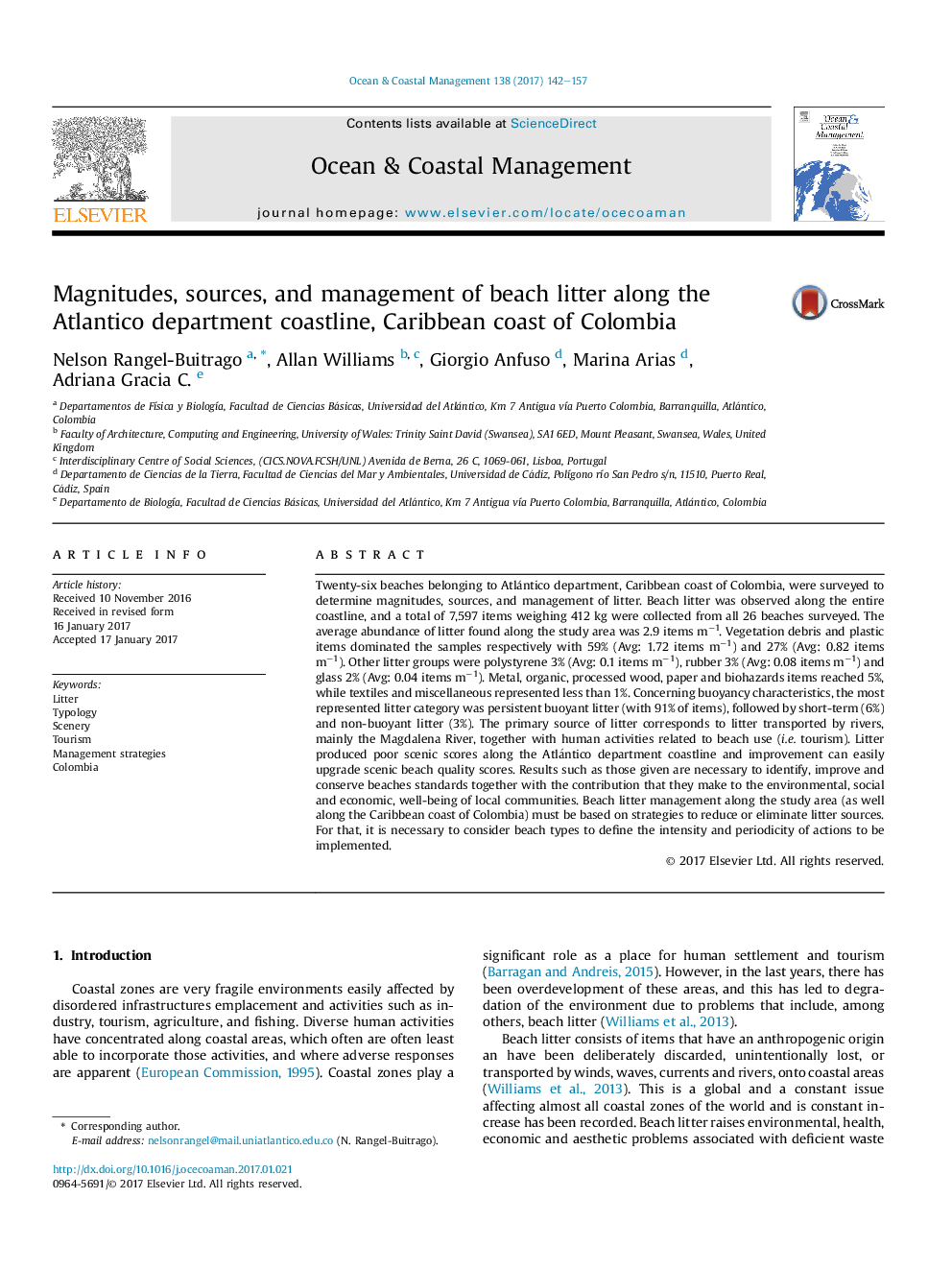| Article ID | Journal | Published Year | Pages | File Type |
|---|---|---|---|---|
| 5473980 | Ocean & Coastal Management | 2017 | 16 Pages |
Abstract
Twenty-six beaches belonging to Atlántico department, Caribbean coast of Colombia, were surveyed to determine magnitudes, sources, and management of litter. Beach litter was observed along the entire coastline, and a total of 7,597 items weighing 412Â kg were collected from all 26 beaches surveyed. The average abundance of litter found along the study area was 2.9 items mâ1. Vegetation debris and plastic items dominated the samples respectively with 59% (Avg: 1.72 items mâ1) and 27% (Avg: 0.82 items mâ1). Other litter groups were polystyrene 3% (Avg: 0.1 items mâ1), rubber 3% (Avg: 0.08 items mâ1) and glass 2% (Avg: 0.04 items mâ1). Metal, organic, processed wood, paper and biohazards items reached 5%, while textiles and miscellaneous represented less than 1%. Concerning buoyancy characteristics, the most represented litter category was persistent buoyant litter (with 91% of items), followed by short-term (6%) and non-buoyant litter (3%). The primary source of litter corresponds to litter transported by rivers, mainly the Magdalena River, together with human activities related to beach use (i.e. tourism). Litter produced poor scenic scores along the Atlántico department coastline and improvement can easily upgrade scenic beach quality scores. Results such as those given are necessary to identify, improve and conserve beaches standards together with the contribution that they make to the environmental, social and economic, well-being of local communities. Beach litter management along the study area (as well along the Caribbean coast of Colombia) must be based on strategies to reduce or eliminate litter sources. For that, it is necessary to consider beach types to define the intensity and periodicity of actions to be implemented.
Related Topics
Physical Sciences and Engineering
Earth and Planetary Sciences
Oceanography
Authors
Nelson Rangel-Buitrago, Allan Williams, Giorgio Anfuso, Marina Arias, Adriana Gracia C.,
